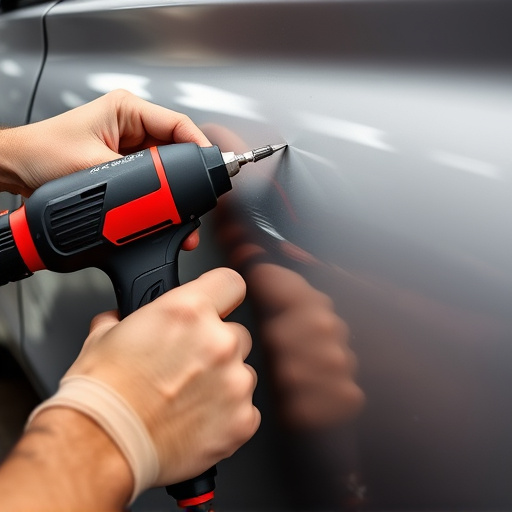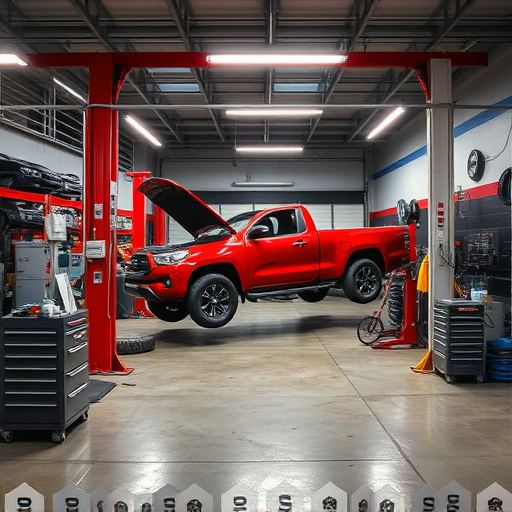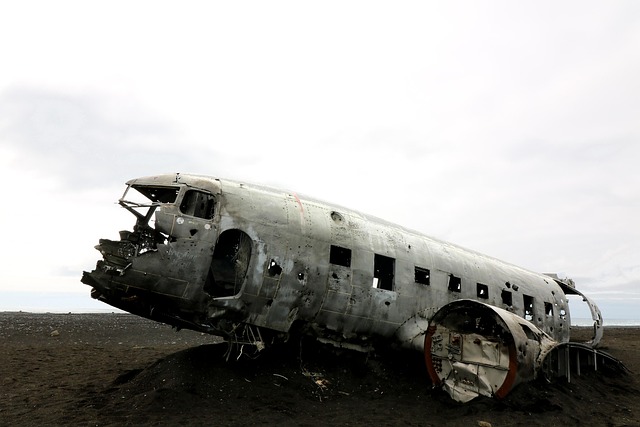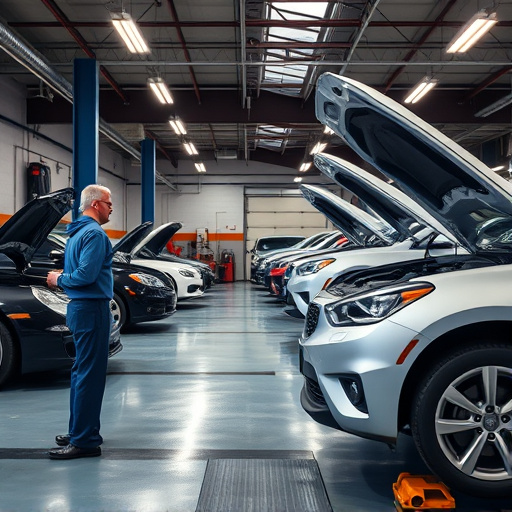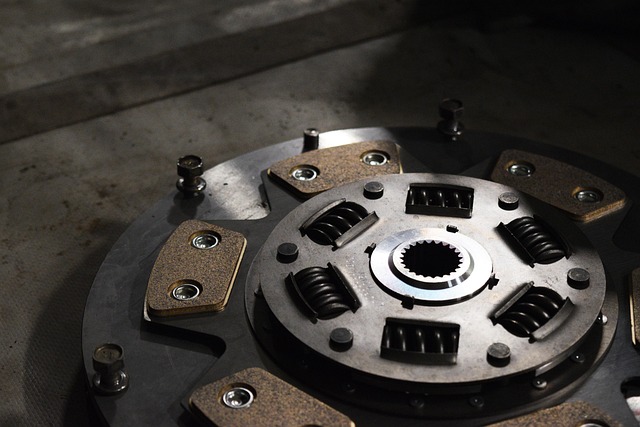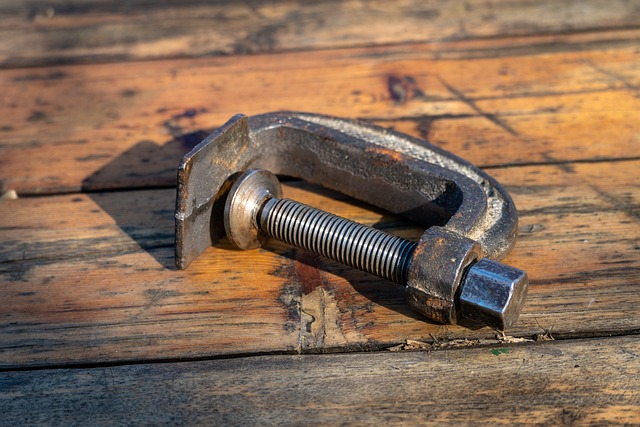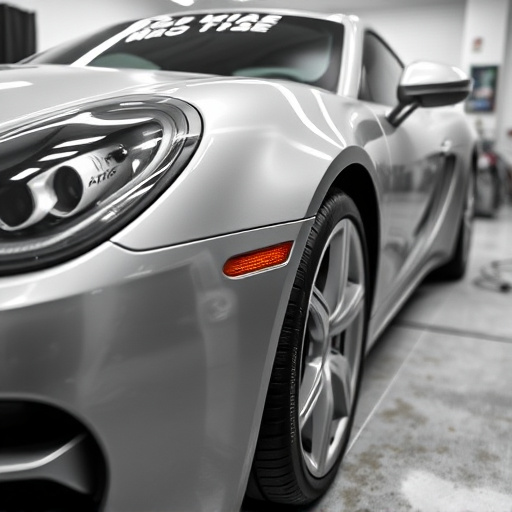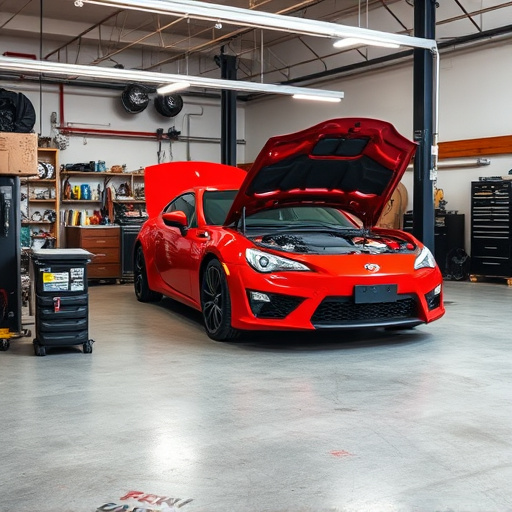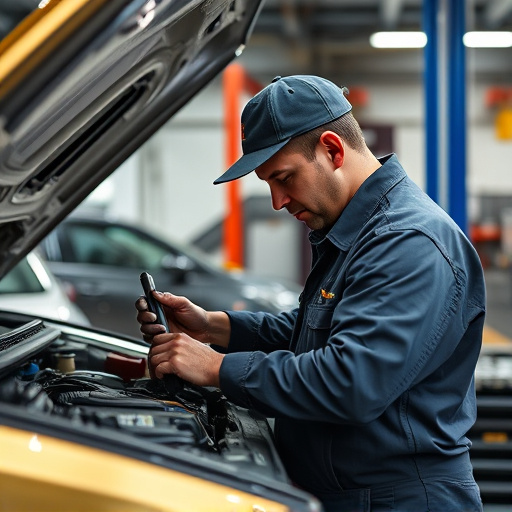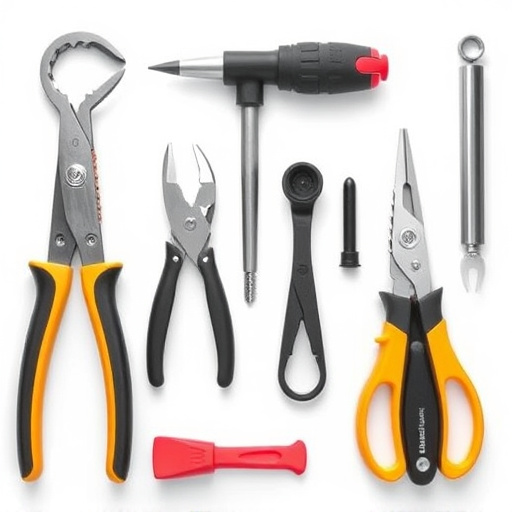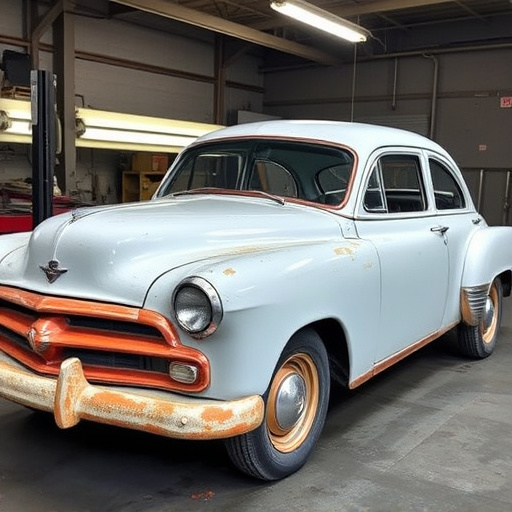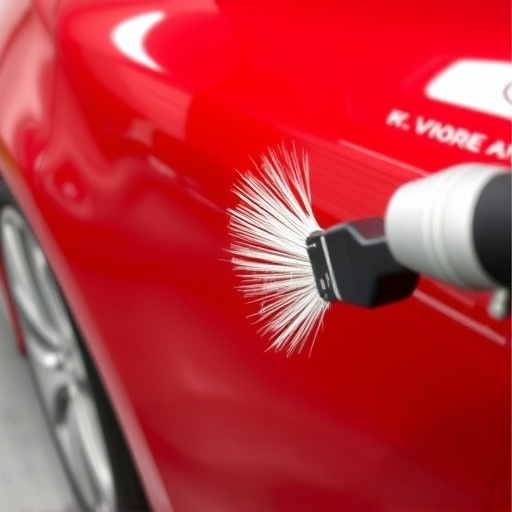Vintage auto body repair presents unique challenges due to lack of modern safety features and standardized parts. It requires authentic replacement parts, traditional skills like panel beating and painting, and meticulous attention to detail to preserve original aesthetic value. Newbies should invest in right tools (hand tools, specialized items) and essential materials (body putty, primer, paint, rust converter). Follow systematic approach: assess damage, replace panels, sand, prime, and paint with patience. Emphasize authenticity throughout for successful preservation of historical vehicles.
Are you a complete beginner looking to dive into the world of vintage auto body repair? This guide is your perfect companion. Discover the art and intricacies of restoring classic cars, from understanding their unique aesthetics to navigating the challenges specific to vintage models. Learn about essential tools, materials, and step-by-step techniques that will equip you with the knowledge to embark on your restoration journey.
- Understanding Vintage Car Aesthetics and Their Unique Challenges
- Essential Tools and Materials for Auto Body Repair
- Step-by-Step Restoration Techniques for Beginners
Understanding Vintage Car Aesthetics and Their Unique Challenges

Vintage cars are more than just a means of transportation; they represent a rich historical and cultural heritage. Their unique aesthetics, characterized by classic lines, intricate details, and often luxurious finishes, set them apart from modern vehicles. However, owning and maintaining a vintage car comes with its own set of challenges, especially when it comes to auto body repair. Unlike contemporary cars, vintage models may lack advanced safety features and standardized replacement parts, making repairs more complex and time-consuming.
The beauty of vintage cars lies in their intricate craftsmanship, from hand-laid wood paneling to meticulous metalwork. When repairing these timeless masterpieces, it’s crucial to approach the process with care and precision. This often involves locating authentic replacement parts, mastering traditional auto body shop services like panel beating and auto painting, and ensuring that repairs preserve the car’s original aesthetic and value. Understanding these challenges is the first step for anyone venturing into vintage auto body repair, guaranteeing the longevity of these beloved classics on the road.
Essential Tools and Materials for Auto Body Repair

When diving into vintage auto body repair, having the right tools and materials is essential for a successful and accurate restoration. For beginners, it’s crucial to invest in a well-stocked toolkit tailored for automotive restoration. This includes items like a set of high-quality wrenches, sockets, screwdrivers, pliers, and a hammer—all in varying sizes to accommodate different car parts. A staple gun, wire brushes, sandpaper (in various grits), and a paint mixer are also vital components. These tools enable you to disassemble, clean, and prepare the car’s body for repairs, ensuring a smooth surface ready for painting.
Additionally, materials like body putty, primer, and paint specific to your vintage car’s make and model are necessary. Filler materials, rust converter, and automotive-grade tape complete the essential supplies. Remember, quality tools and materials can significantly impact the outcome of your auto body repairs, ensuring a more authentic and lasting restoration for your classic vehicle.
Step-by-Step Restoration Techniques for Beginners

For beginners dipping their toes into the world of vintage auto body repair, a structured approach is key. Start by thoroughly assessing the vehicle, identifying any dents, cracks, or areas of rust. This initial step involves careful inspection using torches, magnifying glasses, and traditional measuring tools to understand the extent of damage, especially from past fender benders. Once the damage is mapped out, begin with basic repairs like panel replacement using sheet metal and welding techniques, focusing on precision to match the classic car’s original finish.
Proceed with meticulous sanding, ensuring a smooth surface before priming and painting. This step-by-step process demands patience, as each layer must be carefully applied, allowing proper drying between coats. Remember, vintage auto body repair isn’t just about fixing; it’s about preserving history. Thus, authenticity and attention to detail are paramount throughout the automotive repair journey, ensuring your classic car restoration is a testament to bygone eras.
Vintage auto body repair is a rewarding endeavor that allows you to breathe new life into classic cars while honing your skills. By understanding the unique aesthetics and challenges of these vehicles, arming yourself with the right tools and materials, and following proven restoration techniques, you’ll be well on your way to becoming a proficient restorer. Whether you’re a complete beginner or looking to refine your skills, this guide provides a solid foundation for mastering vintage auto body repair.
